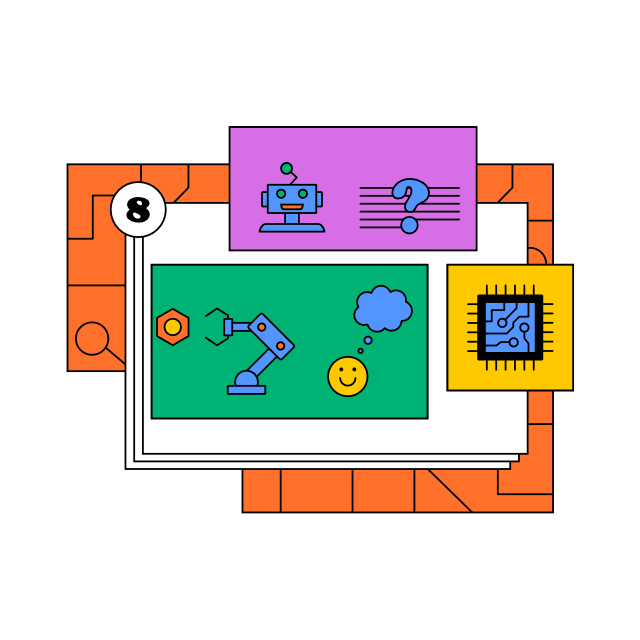SDG 8Decent work and economic growth
Economic growth, artificial intelligence, and decent work for all
Overview
Digitalization, automation, and artificial intelligence have been integrated into our lives faster and to a greater extent than we could have imagined a few years ago. In an ideal scenario, robots and technology have the potential to move humankind forward, help protect the planet and make hard physical work easier. At the same time, there are reasonable concerns that robots increase the risk of unemployment, loss of identity, and both personal and societal upheaval. We will face not only the challenges of technological progress, but also the social responsibility for its impact in the future.
Solution and Key Innovations
As a result of automation, 670,000 jobs were eliminated in the U.S. between 1990 and 2007 with half of the remaining positions being threatened by automation in the next 20 years.1 Artificial intelligence is taking over predominantly automated and repeating tasks in transport, logistics and administrative support.
Such a change allows people to focus on tasks that require human input – creativity, imagination, strategic planning, and emotional intelligence. The World Economic Forum estimates that, despite fears of a decreasing amount of work for people, the adoption of automation and artificial intelligence will generate 97 million new jobs by 2025.2 It is predicted that this will happen in a similar way as it did after the invention of computers and cars.
The British company CMR Surgical developed the surgical robot system Versius which can make doctors’ jobs significantly easier. The American company Agility Robotics developed Digit, a robot which aims to help people with logistics, transport, and the delivery of packages and to assist immobile people. The Japanese company SoftBank Robotics, which originally started in France, launched the first ever social humanoid called Pepper. The robot recognizes faces and basic human emotions. More than 2,000 companies worldwide have bought Pepper to assist, welcome, and guide their visitors. Aquanaut, the underwater robot, is able to both inspect and fix underwater oil rigs. Tesla has designed the first self-driving car; the Waverly Labs has introduced the pilot prototype of a simultaneous translation device. Boston Dynamics, a major U.S.-based robot-development centre, has introduced Spot, a robot programmed to assist primarily in industry – in factories and warehouses where it can perform difficult and tedious tasks.
It is important to acknowledge that robots do not replace people at work – they simply work differently. Setting boundaries, including ethical ones, is absolutely crucial for the further development of robotics, artificial intelligence, and automation. Such boundaries can help us better define a meaningful position of people in the robotic society of the future.
Key Questions
- How to divide jobs between us and robots?
- How many jobs will be lost and how many will be created because of AI?
- Can AI help low-income people?
Key Words
Artificial intelligence, robot, automation, innovation
